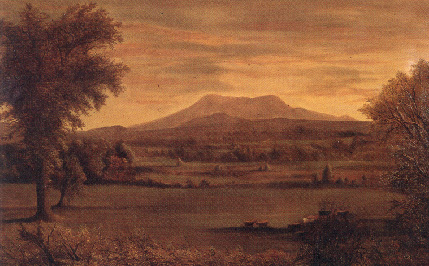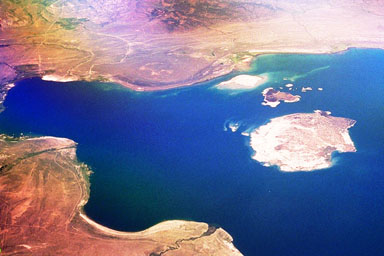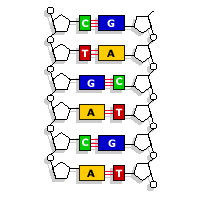![]()
the quality of our surroundings | environmentalism's essential quality | commentary | genes | DNA structure | more
![]()

“Environmentalism is still viewed especially in the US as a special interest lobby.”
the quality of our surroundings | environmentalism's essential quality | commentary | genes | DNA structure | more
|
|
|---|---|
| Edward O. Wilson on the hidden dimensions of biophilia, or love of living things. | |
| But our surroundings, the native environs, the natural features that remain in the world possess something vastly more important and central to our lives than just being pretty to observe. | |
| “The soil , water and atmosphere of its surface have evolved over hundreds of millions of years to their present condition by the activity of the biosphere, a stupendously complex layer of living creatures whose activities are locked together in precise but tenuous global cycles of energy and transformed organic matter.” | |
 |
|
Mount Greylock, Pittsfield , Mass. inspired Herman Melville. |
|

Mono Lake shown here in the high desert of the Eastern Sierra was destroyed to divert its water for Los Angeles' use hundreds of miles away.
 “shimmering
physical disequilibrium”
“shimmering
physical disequilibrium”
“When we destroy ecosystems and extinguish species, we degrade the greatest heritage this planet has to offer and thereby threaten our own existence.”
p. 39.
Humanity is flawed, venal -- not angelic -- but reckless and ignorant of biology
p. 40.
That is the essence of environmentalism, the guiding principle of those dedicated
to restoring the planet’s health.
deep within human nature springs the relative indifference of people to the environment
people are indifferent to the planet
“To look neither far ahead nor far afield is elemental in a Darwinian sense.”
The great dilemma of environmental reasoning stems from the conflict between short and long term values.
p. 40.
creating a universal environmental ethic is difficult
p. 41.

"but combine them we must the only guide by which humanity and the rest of life can be safely conducted through the bottleneck into which our species has foolishly blundered."
p. 41.
E. O. Wilson, The Future of Life, 2002
On the function of genes in biological diversity
 A view of chemical inheritance.
A view of chemical inheritance.
"Each species is the repository of an immense amount of genetic information.  The number of genes range from about 1,000 in bacteria and 10,000 in some fungi, to 400,000 or more in many flowering plants and a few animals. A typical mammal such as the house mouse (Mus musculus) has about 100,000 genes. This full complement is found [or so we believe] in each of its myriad cells, organized from the strings of DNA, each of which comprises about a billion nucleotide pairs."
The number of genes range from about 1,000 in bacteria and 10,000 in some fungi, to 400,000 or more in many flowering plants and a few animals. A typical mammal such as the house mouse (Mus musculus) has about 100,000 genes. This full complement is found [or so we believe] in each of its myriad cells, organized from the strings of DNA, each of which comprises about a billion nucleotide pairs."
The shared chemical inheritance of all life that enables diversity.
"Human beings have genetic information closer in quantity to the mouse than to the more abundantly endowed salamanders and flowering plants; the difference, of course, lies in what is encoded."
p 7.
The molecular shape of the nitrogen base pairs of the deoxyribonucleic acid polypeptide.
A = Adenine.
T = Thymine.
G = Guanine.
C= Cytosine.
"If stretched out fully, the DNA would be roughly 1-meter long. But this molecule is invisible to the naked eye because it is only 20 angstroms in diameter.
On the quantity of data stored on or along strands of DNA Wilson says that "the full information contained therein, if translated into ordinary sized letters of printed text, would just about fill all the 15 editions of the Encyclopedia Britannica publishes since 1768."
p 7.
The number of species and the amount of genetic information in a representative organism constitute only part of the biological diversity on Earth. Each species is made up of many organisms. For example, the 10,000 or so ant species have been estimated to comprise ten quadrillion (10 to the 15th) living individuals at each moment in time."
"Except for cases of parthenogenesis [virgin birth] and identical twinning, virtually no two members of the same species are genetically identical, due to the high levels of genetic polymorphism across many of the gene loci. At still another level, wide-ranging species consist of multiple breeding populations that display complex patterns of geographic variation in genetic polymorphism [different forms of the same gene]. Thus, even if an endangered species is saved from extinction, it will probably have lost much of its internal diversity. When populations are allowed to expand again, they will be more nearly genetically uniform than the ancestral populations. The bison herds of today are biologically not quite the same –not so interesting– as the bison herds of the nineteenth century.
p. 7.
E. O. Wilson, (ed.) Biodiversity. Washington, D.C. : National Academy Press, 1988.
Some related ideas:
Wilson's works.
Diversity's premier importance
Garrett Hardin, Nature and Man's Fate, 1959.
Rachel Carson, Silent Spring, The Earth's Green Mantle
Ian Tattersall on hominid descent
Ernst Mayr on Evolution
atmospheric carbon accumulation
biological diversity and climate change
Solving ecological problems
Fritjof Capra | Charles Darwin | Paul Ehrlich | Garret Hardin | Richard Lewontin | Lynn Margulis | Ernst Mayr | Norman Myers | Ian Tattersall | Lewis Thomas